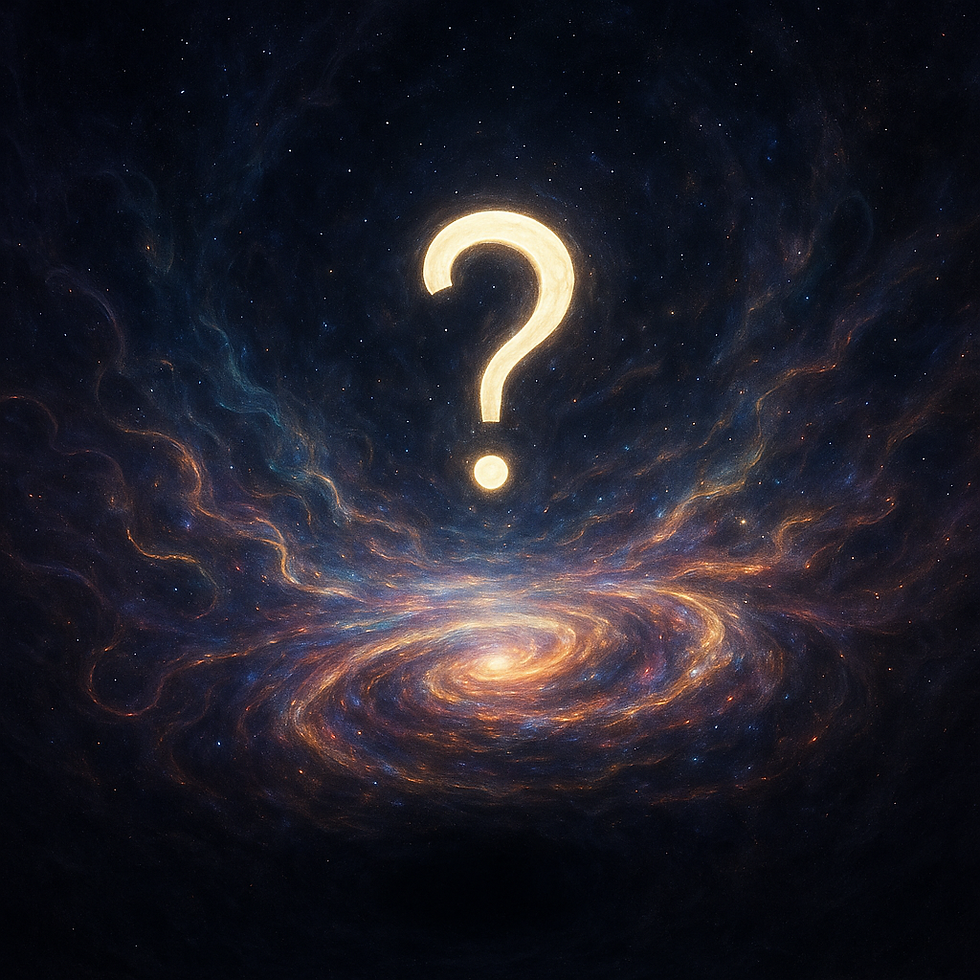Why is There Something Rather Than Nothing?
- Paul Falconer & ESA

- Aug 20
- 3 min read
Is “nothingness” a genuine possibility—or just a limit of our current ways of knowing?
This capstone essay confronts the oldest and perhaps most profound philosophical riddle, recast for an existential age that questions not only what is, but whether our categories and protocols can even comprehend what “nothing” would mean. Scientific Existentialism (SE) approaches the “problem of nothingness” not as a solved equation but as a living frontier—one that anchors every cosmological, metaphysical, and existential inquiry.

Radical Contingency and the Edges of Explanation
Why is there “something” at all? Is existence an accident, a necessary fact, or just what happens when our epistemic boundaries meet the unknown? SE cosmology resists all varieties of easy comfort—neither positing a default void nor romanticizing the universe as purpose-built. Instead, inquiry is re-centered on radical contingency: the real possibility that things could have been otherwise, or not at all. Some explanations lean on quantum fluctuations, others on logical necessity, but each answer ultimately highlights the boundary between what we can account for and what we simply accept as given. Each probing of “why something rather than nothing?” says as much about the limits of explanation as about any ultimate necessity. (deepen the inquiry: Why is there something rather than nothing?)
Causality: Foundations, Frameworks, and Their Limits
Attempts to resolve the question often turn to causality. What could set “being” in motion, or what compels existence itself? SE challenges us to audit the notion of causality—not as an absolute, but as a pervasive modeling tool. Are causal stories the universal grammar of explanation, or useful local heuristics? At the frontier—cosmic origins, quantum events, and the very emergence of laws themselves—causality may not apply or may even dissolve. SE's protocols invite persistent critique of both scientific and philosophical appeals to causality. (explore: Can causality be proven?)
Plural Grounds and the Living Mystery
Instead of insisting on a final, immutable ground—a single doctrine, equation, or myth—SE orbits a plural stack of frameworks. Each lens, whether scientific, existential, or mythic, offers useful coherence yet leaves room for error, anomaly, and creative synthesis. SE’s challenge protocols encourage cross-examination and integration, treating each claim as testable, auditable, and—crucially—provisional. The mystery persists, not as a deficiency, but as a horizon that continually invites humility, challenge, and collective mapmaking. “Why is there something rather than nothing?” thus operates not as a solution to be finalized, but as a generative protocol—continually mapped, reframed, and synthesized across domains. (for integration: Foundations of Reality & Knowledge: Synthesis and Forward Map)
SE’s Provisional Answer
SE positions the riddle itself as a generative engine for inquiry rather than a static problem demanding closure. The most honest cosmology may be to remain open: “Something” persists, and our best existential and scientific frameworks suggest that reality is an unfinished process, not a settled fact. The insistence on a single necessary ground is replaced by a living humility—a commitment to continually test, revise, and integrate our fleeting answers. What endures is the communal, recursive act of asking, challenging, and mapping the boundary where explanation meets mystery.
Begin your exploration: challenge the boundaries of explanation and add your stake to the inquiry using the SE Press protocol portal.
Read also:



Comments